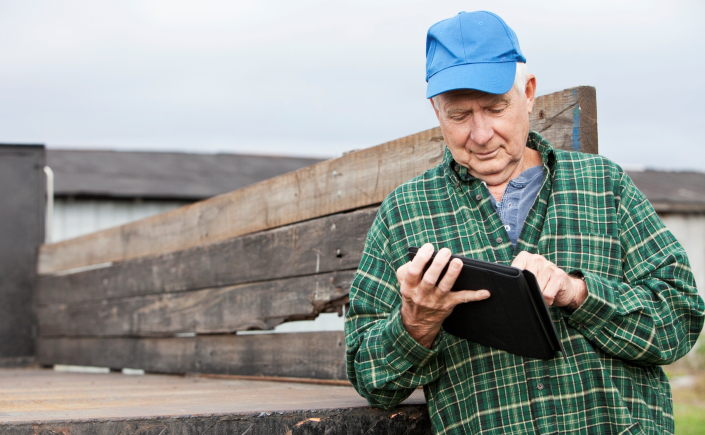
Since its inception, MnDRIVE (Minnesota’s Discovery, Research and InnoVation Economy) has fueled a multitude of research projects, all with the common goal of finding innovative solutions for grand challenges that fall within four research areas.
Along the way, the cutting-edge technologies developed as part of these projects are moving beyond the lab to become actual inventions. To date, nearly 180 MnDRIVE-related intellectual property disclosures have been filed with the University of Minnesota’s technology commercialization office. These disclosures mark the first step in moving inventions beyond the lab. Included within these are 50 disclosures stemming from transdisciplinary research and 28 that have included graduate or undergraduate student researchers.
“The mission of MnDRIVE is to enhance quality of life and economic vitality in Minnesota and beyond,” said Brian Herman, Ph.D., the U’s vice president for research. “The program has proven effective in developing innovative, practical technologies, which have the potential to further Minnesota’s leadership in key industries and promote prosperity across the state.”
Below are two examples of technologies that have come out of MnDRIVE projects focused on advancements in agriculture.
An App to Track Livestock Health
A lot rides on preventing the spread of livestock diseases, from economic stability to food security to human health. Keeping livestock healthy is especially important in Minnesota, where the combined value of livestock totaled $3.8 billion in 2012, according to the U.S. Department of Agriculture.
To help farmers, veterinarians and researchers better track livestock diseases, University researchers have created an easy-to-use mobile app. HerdIn:Form(er) is a digital surveying tool that collects and stores data for use in modeling the spread of diseases among herds and flocks of all species. The system was developed by Andres Perez, Ph.D., endowed chair in global animal health and food safety with the College of Veterinary Medicine, as part of MnDRIVE’s STEMMA project, which aims to help Minnesota protect the food supply and limit economic damage during outbreaks of contagious animal diseases. Software for the app was developed by Gabe Al-Ghalith, research assistant in the U’s Biomedical Informatics and Computational Biology program.
“To curb a disease outbreak, we need to be able to react quickly and intelligently,” Perez said. “Diagnostic technologies that are both flexible and easy to access can help us do that. This project demonstrates the University’s leading capabilities in food security and economic development.”
HerdIn:Form(er) is designed for use in the field, so it can store data when no internet connection is available and automatically upload it later. The data can then be analyzed to create mathematical models on both the epidemiological and economic effects of animal diseases.
The app can also collect the most relevant information for different diseases. It has already been used by University researchers to study foot and mouth disease in cloven-hooved animals, porcine reproductive and respiratory syndrome in pigs, and viral hemorrhagic septicemia in fish. This research will help inform farmers’ and state officials’ efforts to curb future outbreaks of these economically devastating diseases. Going forward, farmers, veterinarians and researchers beyond the U can also use the tool to contribute to the prevention effort on farms across the state.
HerdIn:Form(er) is available through a non-exclusive license for non-commercial research or individual use, and it is getting international attention. A license for the app has already been obtained by the Ministry of Agriculture, Livestock and Food in Guatemala, and Perez and Al-Ghalith have been working to adapt a new version of the tool for use in other parts of Central America, including Costa Rica, El Salvador and Honduras, which will deepen the University’s international leadership in veterinary diagnostics.
More Efficient Drone-Guided Precision Agriculture
Drone-based precision agriculture is an emerging technique for farmers who want to harness data to boost crop productivity and profitability. The technique can give farmers data on which plants suffer from problems like malnutrition or dehydration and allow them to take informed and environmentally sustainable actions to help their crops grow. But aerial drones face a major barrier in battery life — with flight times as short as 10 minutes, it can be difficult to gather data on large fields.
Volkan Isler, Ph.D., associate professor of computer science with the U’s College of Science and Engineering, has developed a computer program that coordinates the movements of aerial and ground drones to work in tandem, giving farmers a low-cost way to pinpoint the areas of the field where soil measurements need to be done, navigate the ground robots along the most efficient path to reach them and extend the aerial drone’s flight time in the process.
Isler’s program saves battery by enabling the air vehicle to land on the ground vehicle, allowing it to power down until it reaches a different part of the field. In proof-of-concept tests, drones guided through the program sampled up to 35 percent more points on the field. Isler said the extra efficiency could allow drones to play a larger role on farms down the road.
The program is currently available for license and is part of a larger portfolio of precision agriculture technologies based on the U’s growing body of research in this area.
“We’re working toward having many robots, some of them ground vehicles and some aerial vehicles with sensors, that could autonomously deploy themselves,” Isler said. “These systems could gather data and generate information that’s useful to farmers.”
Right now, Isler’s research continues in apple orchards, where flying drones between trees to gather data can be a trickier process than the top-down view used for most crops.
MnDRIVE is a landmark partnership between the University and the state of Minnesota that aligns areas of University strength with the state’s key and emerging industries to advance new discoveries that address grand challenges.